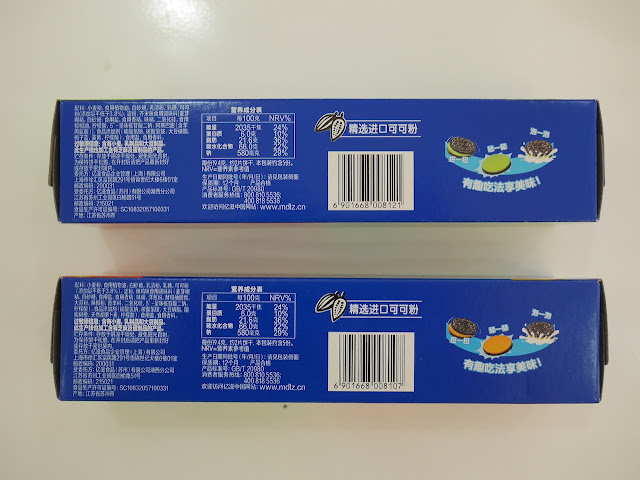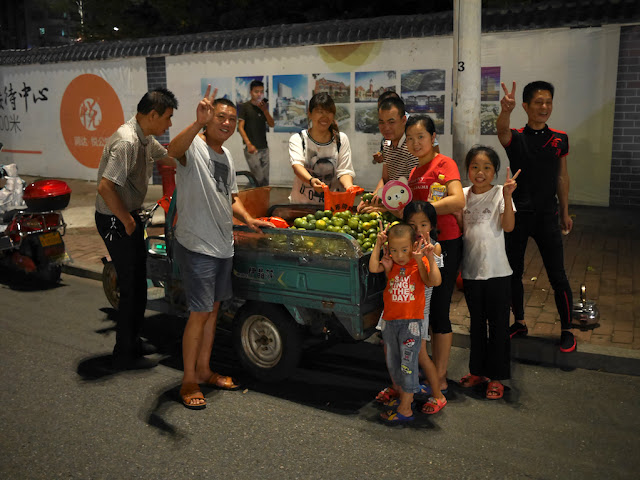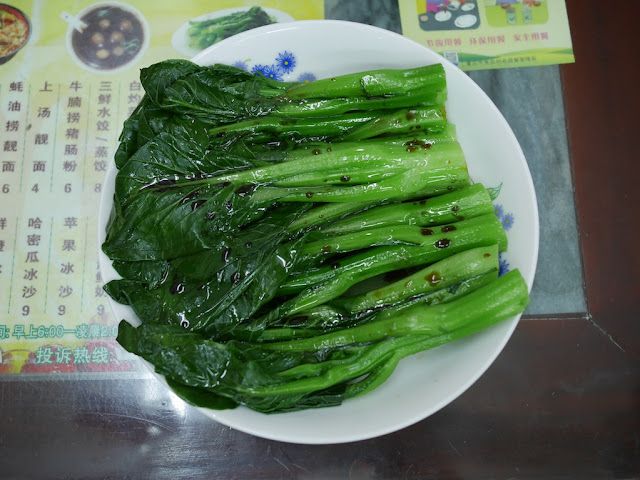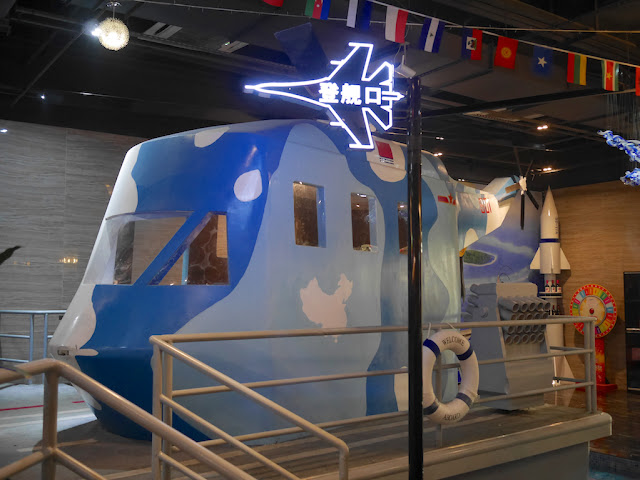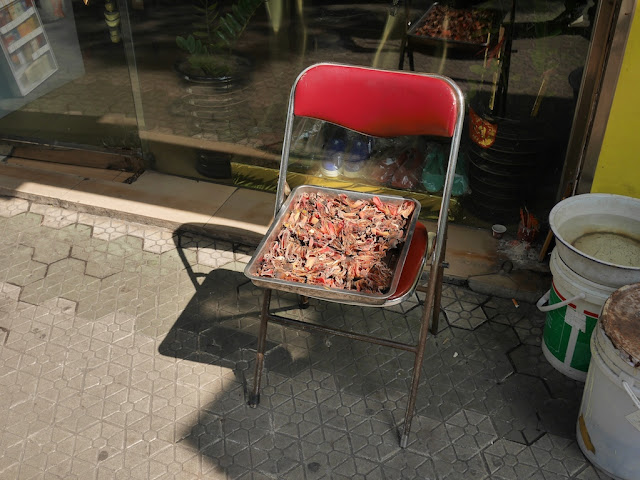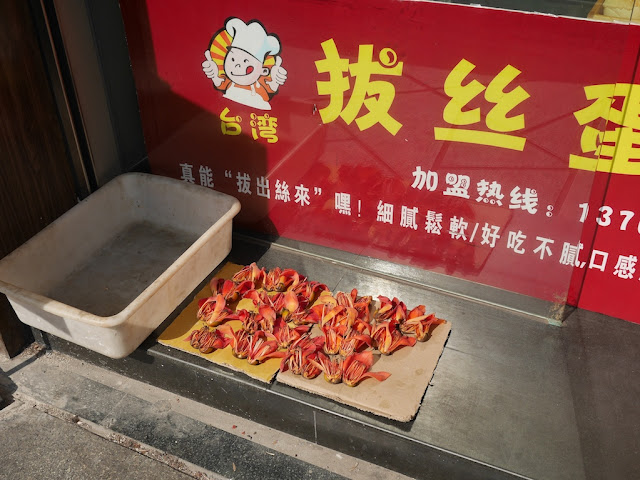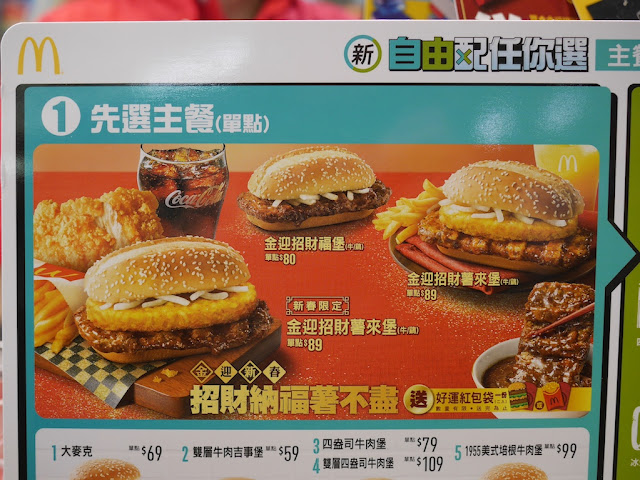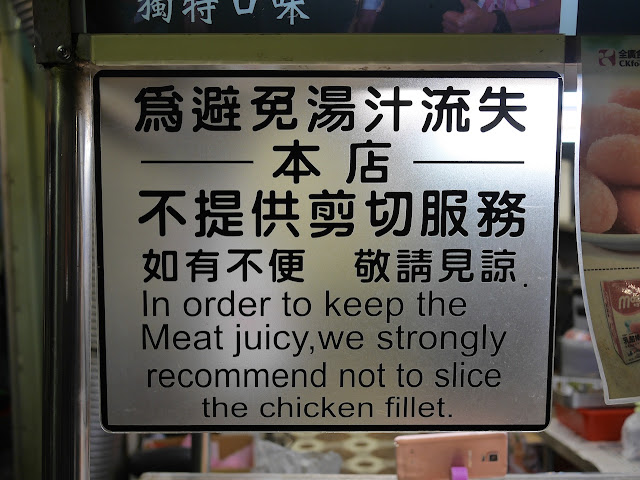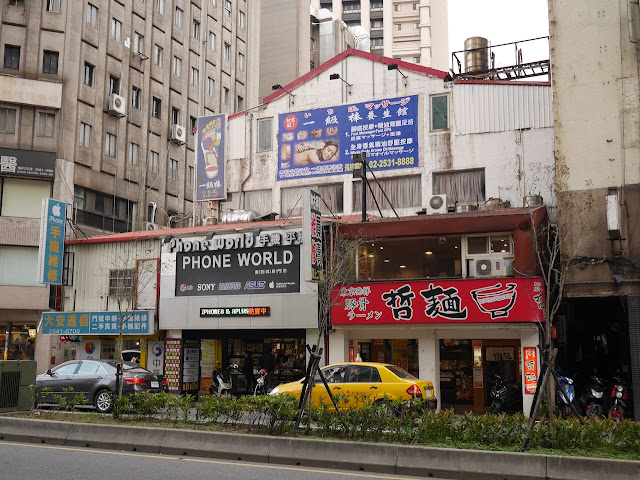 |
| Two spicy new Oreo flavors |
Nearly a month ago I first heard about the introduction of two new Oreo flavors in China — Hot Chicken Wing and Wasabi. The news provoked some strong reactions in the Western world, and several of my own friends in the U.S. shared stories about it. One wrote, "No!! Stop it!! What did the Chinese ever do to you, Nabisco??"
Nabisco probably can't be blamed (or commended) for this one though. While Nabisco produces Oreos in the U.S. for its parent company Mondelēz International, it doesn't make them for China and many other countries in the world.
Initially I had hopes for the Wasabi Oreos due to positive experiences in the past with chocolate with spicy red pepper. Hot chicken wings seemed rather peculiar, But then a friend reminded me that there is chocolate in the sauce for chicken molé, and that is good stuff. She had also just made chocolate chicken chili, which is now on my list of things to try. I now had higher hopes for the Hot Chicken Wing Oreos.
Additionally, the new flavors were of interest given my interests in how Western companies localize their products and services in China, and I have tried other Oreo flavors in China in the past. For example, six years ago in Shaoxing I tried Peach-Grape Oreos. They weren't my thing, but presumably other people feel differently because they are still available. Then three years ago in Hengyang I tried Lemon Cheesecake Oreos. I liked them a lot more, and they're still around too.
So I was ready to try the new flavors. However, there was a problem. After checking more than five large supermarkets in Ganzhou — including a Walmart — I came up empty. They all sold Oreos, but they didn't have these two flavors. Although I occasionally revisited the supermarkets, I expected I would have to wait much longer or switch cities before finding Oreo spiciness.
Recently, I left Ganzhou and am now in Zhuhai. Yesterday, I went to a Vanguard supermarket and finally found the new flavors. But they only had giant-sized boxes, and that was far many more Oreos than I wanted. After that I went to a Walmart. Their selection was rather uninspiring, and they didn't have the new flavors. So then I headed to the place I had thought would be my best bet here — Carrefour, a French hypermarket chain.
Yes, the Carrefour in Jida, Zhuhai, indeed had a wide selection of Oreos.
And yes, my search was over. Soon I had two fine boxes of spicy Oreos in my possession.
Each box of 10 Oreos had a price of 5.8 yuan (about U.S. 85 cents). I tried sharing my excitement with several other people shopping at Carrefour. As far as I could tell, they didn't understand why I was so happy, but they at least seemed happy I was happy.
Now, a look at some of the info on the boxes:
Based on this information, the Oreos have equal nutritional value. So being on a diet probably wouldn't affect a choice of one over the other. Also, the Oreos are made in Suzhou — a city in Jiangsu province bordering Shanghai. Suzhou has many canals and presumably many Oreos as well.
Opening the boxes reveal they both held two pouches of cookies.
If I didn't like them, I could easily give half away. If I did like them, half would stay fresh longer. I call that a win-win.
And finally, a look at the innards:
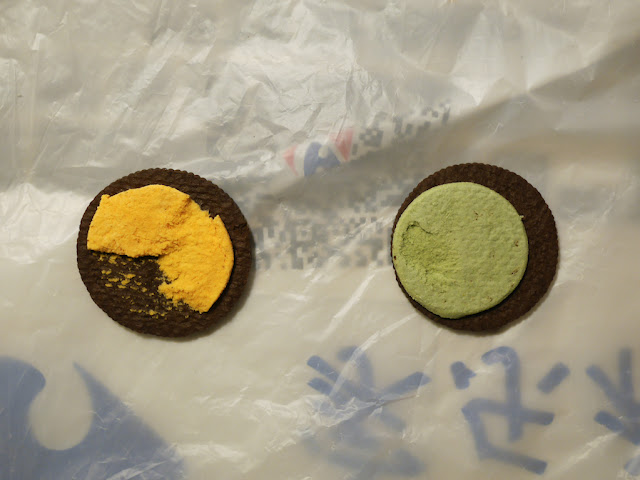 |
| Note: some creme missing due to imperfect wafer separation |
Now the moment we have all (or at least I have) been waiting for: the test taste.
I thought about this a lot (too much), and I will start with the Hot Chicken Wing Oreos. Prelude: a sip of milk, of course.
Here we go . . .
Huh, um . . . it's more like a hot pepper flavor Oreo. Or maybe more of a barbecue potato chip Oreo. I feel like it is flavor-shifting, but at no point do I taste a chicken flavor. It is . . . different. I like it more than the Peach-Grape Oreos. I'm not at all a fan of the Peach-Grape.
Now I will just try some of the filling on its own. That is . . . odd stuff. It isn't sweet. I liked how it worked with the chocolate wafers much better than on its own. If I had tried the filling without knowing what it is, I think I still wouldn't know what it is. Actually, I'm not sure I know what it is regardless.
By the way, it has been a long time since I have eaten Oreos of any flavor.
OK, now another sip of milk before trying a Wasabi Oreo.
Here we go again . . .
Wow. Just wow. Unlike the Hot Chicken Wings Oreos, there's no mystery here. This was undoubtedly a Wasabi Oreo. The kick isn't as strong as the wasabi that comes with your sashimi, but the flavor is clear. Now just the filling . . . Again, not sweet, but I wouldn't use it with sashimi. Like before, I prefer it with the wafers more than on its own.
Finally, I will try something the Oreo folks might not condone. I will eat half a Hot Chicken Wing Oreo and half a Wasabi Oreo at the same time.
Here we go . . .
Hey . . . that was a zillion times better than I expected (note: I had expected a near complete disaster). And it tasted like nothing I have tasted before.
The final verdict (for today): The Hot Chicken Wing Oreos were better than I expected. I don't find them gross, though I can't recommend the creme on its own. The Wasabi Oreos fit with my expectations, and I could imagine they have addictive potential. I wish I could say more about the improvised combo version, but I can't. It's like seeing a new color for the first time.
In short, while I expect some people wouldn't like either of these Oreo flavors even if they gave them a fair try, I definitely can now see how some people will like one, both, or even the combo.
I don't think I'm giving away my remaining Oreos.



